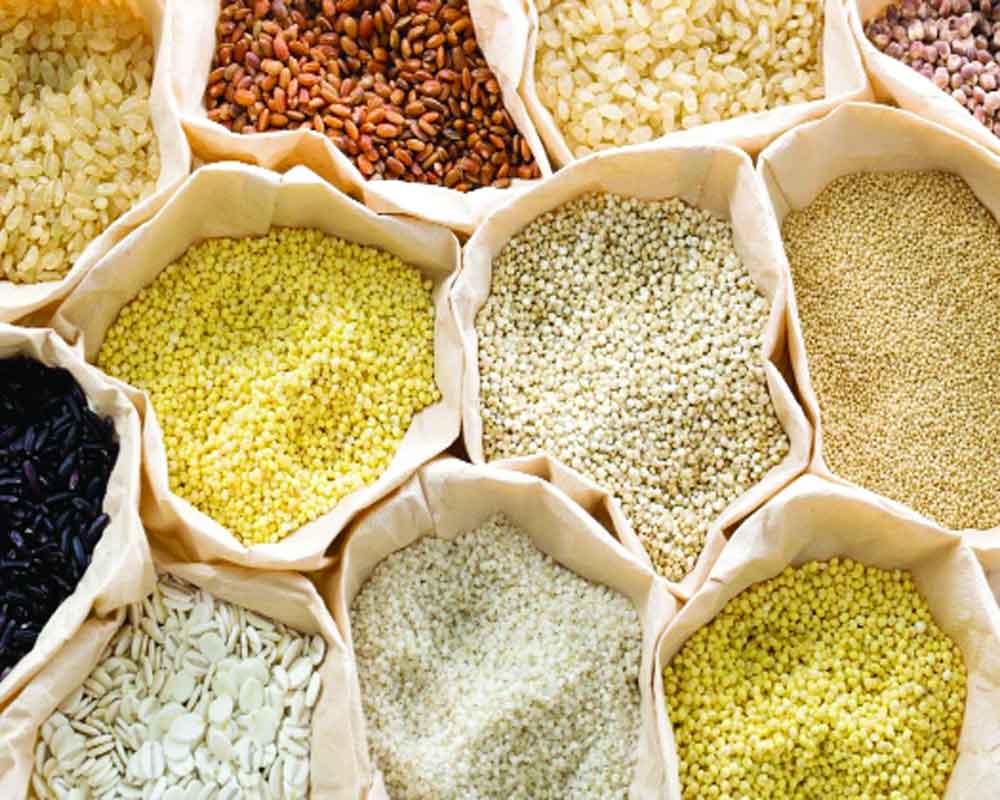To prevent lifestyle-related diseases and lead a healthy life, regular consumption of millets, and pseudocereals is highly desirable
India is facing the epidemiological transition with a spike in non-communicable diseases (NCDs) or “lifestyle” diseases like diabetes, stroke, hypertension, kidney, liver and heart diseases as well as the “dual disease burden” due to the prevailing raised prevalence of communicable diseases. The various factors contributing to this exponentially growing epidemic are dominated by the unhealthy diet intake which affects all the age groups equally. The growing epidemic of diet-communicable diseases (DR-NCDs), along with widely prevalent undernutrition results in a substantial socioeconomic burden.
Over the past three decades, the increasing consumption of processed food or unhealthy diets has resulted i.e., the Nutrition transition has resulted in the decreased intake of coarse cereals, pulses, fruits and vegetables, and an increased intake of meat products and salt.
This has further increased about 6% of energy being derived from fats and a decrease of 7% in the energy derived from carbohydrates. Contributing to the growing burden of NCDs, the Nutrition transition coupled with reduced physical activity due to rapid urbanization has resulted in escalating levels of obesity, atherogenic dyslipidemia, subclinical inflammation, metabolic syndrome, type 2 diabetes mellitus, and coronary heart disease in Indians (Mishra, et al, 2011). Also, the increased prevalence of malnutrition is characterized by an increased intake of Western-style diets and a decrease in physical activity in association with high consumption of tobacco and alcohol among fathers and mothers.
The growing trend of preventing diet-related diseases by consuming functional foods has been taken up by the Government of India. As epidemiological studies show diets rich in plant foods, including whole grains, protect us against non-communicable diseases like diabetes, cancer and cardiovascular diseases, due to the protective effects of phytonutrients. Therefore, the Department of Health & Family Welfare provides, advocates & implements initiatives for increasing public awareness and for the promotion of a healthy lifestyle under the National Programme for Prevention and Control of non-communicable diseases (NP-NCD). Furthermore, healthy eating is also promoted by the Food Safety and Standards Authority of India (FSSAI).
Further to the efforts towards introducing healthy eating habits in the population, Millets have resurfaced as a healthy & more efficient option. Millets are the traditional grains, grown and consumed in the Indian subcontinent from the past more than 5000 years. They are rain-fed hardy grains that have low requirements of water and fertility when compared to other popular cereals.
They are a group of small, grained cereal food crops that are highly tolerant to drought and other extreme weather conditions and are grown with low chemical inputs such as fertilizers and pesticides. Most of millet crops are native to India and are popularly known as Nutri Cereals as they provide most of the nutrients required for the normal functioning of the human body. Millets comprising sorghum, pearl millet, finger millet, minor millets etc as Nutri cereals. Millets are connected to climate resilience. The need of the hour is to understand that it's crucial to increase the productivity of millets, which includes R&D, good care of crops and a robust supply chain.
Globally Millets are grown in the Asian region where countries like India, Nigeria and China are the largest producers of millets in the world, accounting for more than 55% of the global production. For many years, India was a major producer of millet - However, in recent years, millet production has increased dramatically in Africa. In India, pearl millet is the fourth-most widely cultivated food crop after rice, wheat and maize - Millets are available almost across India.
India has been aware of the multitude of benefits that Nutri Cereals offer. Our ancestors were smart enough to reap all these benefits, as compared to the present generation which has been diverted and misguided with the growing commercialisation & urbanisation. Millets are highly nutritious, non-glutinous and non-acid-forming foods. They have many nutraceutical and health-promoting properties, especially the high fibre content. Millets act as a prebiotic feeding for micro-flora in our inner ecosystem.
They hydrate our colon to keep us from being constipated. The Niacin content helps in lowering cholesterol. It contains major and minor nutrients in good amounts along with dietary fibre. It can very well be a substitute for wheat or gluten-containing grains for celiac patients.
The exceeding benefits of having millet/ nutri-cereals in our regular diet help tackle health challenges such as obesity, diabetes and lifestyle problems owing to their low glycaemic index, high dietary fibre and antioxidants. Nutri-cereals are highly nutritious and known to have high nutrient content which includes protein, essential fatty acids, dietary fibre, B-Vitamins and minerals such as calcium, iron, zinc, potassium and magnesium. It can provide nutritional security and protect against nutritional deficiency, especially among children and women. It will also be critical for climate change measures in drylands and important for smallholder and marginal farmers.
Nutri-cereals are nutritionally superior to major cereals in terms of slow digestible carbohydrates, non-allergenic proteins, dietary fibre and micronutrients. They contain 55–75% starch, 7–15% protein, 2–5% lipid, 2–4% minerals, and 7–15% dietary fibre.
The nutritional and health benefits of millet and pseudocereals have been very well documented and they are recommended to minimize the intensity as well as management of non-communicable diseases such as diabetes, cardiovascular diseases, and obesity.
In the present scenario of a sedentary lifestyle, prevention of lifestyle-related diseases and leading a healthy life, regular consumption of millet, and pseudocereals is highly desirable.
Government Initiatives:
To enhance awareness and promote the production & consumption of millets, the millets were rebranded as “Nutri Cereals and “2018” was designated as the National Year of Millets. Later, the United Nations General Assembly on its 75th session declared 2023 as the International Year of Millets. This will provide an opportunity to (i) increase global production, (ii) efficient processing and better use of crop rotation and iii) promote millets as a major component of the food basket.
(The writer is Deputy Director General, Dte.GHS, MoHFW, Government of India, views are personal)


























